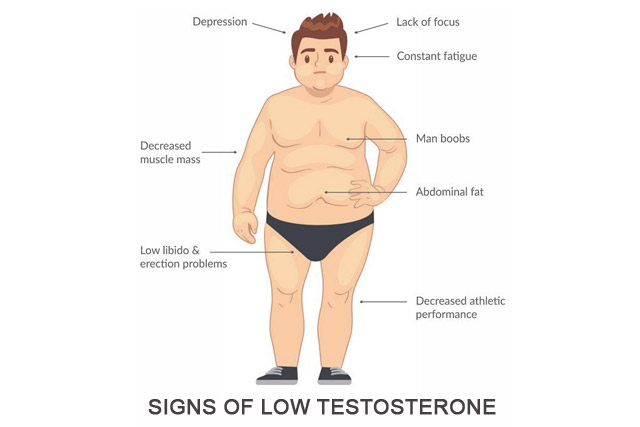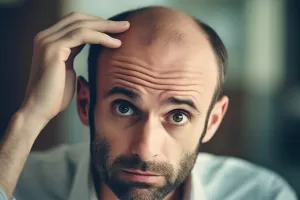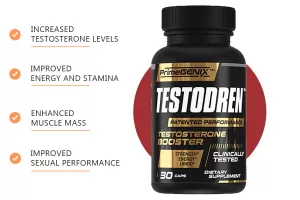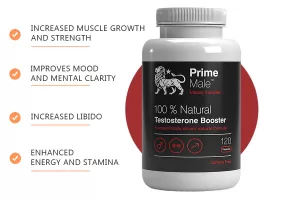Approximately 4 – 5 million men are diagnosed with hypogonadism in the United States only. This condition occurs when a man’s testicles do not secrete enough testosterone. The hormonal imbalancecan be caused by natural reasons, an unhealthy lifestyle, or health issues.Each case requires a different approach.
What is testosterone and what is its role?
Testosterone belongs to the group of hormones called androgens. They are treated as male sexual hormones though they are also present and play a part in female bodies. For people born with male genitalia, testosterone can affect:
- puberty;
- appearance, e.g. body hair;
- muscle mass maintaining;
- red blood cell production in the bone marrow;
- bone strength;
- energy level and general wellness;
- erectile and reproductive functions.
Levels of testosterone in the body are usually tightly controlled by homeostasis, the state of dynamic balance between all the body systems. Testosterone in men is produced and released by testicles controlled by the hypothalamus and pituitary gland:
- Hypothalamus produces gonadotropin-releasing hormone (GnRH).
- GnRH signals the pituitary gland to release luteinizing hormone (LH).
- LH goes to the testicles and triggers them to produce and release testosterone.
What testosterone level is considered low?
According to the American Urology Association (AUA), a low blood testosterone level in an adult is less than 300 nanograms per deciliter (ng/dL). This number might be a bit controversial, as there are healthcare providers who believe that levels less than 250 ng/dL should be considered low. The intensity of symptoms and overall health condition of the person is also considered when diagnosing because every human body is individual.
Signs of low testosterone level
Below we list the symptoms of low testosterone. If you think that you have started developing those, please consult your family physician.
- Decreased libido.
- Erectile dysfunction.
- Hair loss, mainly pubic and armpit hair falls.
- Hot flashes.
- Testicles decreasing in size.
- Development of azoospermia – a low count or absence of active sperms in the semen. Azoospermia means that the person is infertile.
These signs do not necessarily point to the low testosterone level but can also occur:
- Mood swings leaning towards depression.
- Memory and ability to concentrate are getting worse.
- Body fat percentage increases.
- Muscle mass loss, or/and it becomes harder to obtain.
- Gynecomastia (breast tissue growth).
- Less strength and stamina.
Low levels of testosterone can lead to children’s development impairments that will be hard to treat. So pay attention to such symptoms that your birth-assigned as male children may have:
- Stunted growth in height, when limbs continue to grow and become disproportional to the body.
- The voice does not get deeper during puberty.
- Pubic hair does not grow, or its growth is reduced.
- Reduced development of genitalia.
- Less-than-normal endurance.
Getting a medical diagnose
Only a healthcare specialist can confidently diagnose you with testosterone deficiency. Your evaluation results may state you have
- Testosterone deficiency syndrome.
- Testosterone deficiency.
- Hypogonadism (primary & secondary).
- Hyper or hypogonadotropic hypogonadism.
Firstly, your provider will perform a medical exam and ask some questions about changes in how you feel daily, your medical history, lifestyle, medications you take, etc. Then, some blood tests may be required. There are three types of blood tests to determine if you really have testosterone deficiency: total testosterone, luteinizing hormone, and prolactin levels. The latter two, if shown abnormalities, may signal issues with the pituitary gland.
Causation of testosterone deficiency
Primary and secondary hypogonadism differ depending on why the person’s testicles do not work as intended. This condition can be related to the testicles themselves or affect the hypothalamus and pituitary gland that rule the process and, assuch, cause the disorder.
The testicles may be affected by congenital (in-birth) or acquired conditions:
- Anorchia, the condition of being born without testicles.
- Cryptorchidism, when testicles have not descended.
- Leydig cells that produce testosterone in testicles have not developed properly.
- Rare genetic conditions, such as Noonan or Klinefelter’s syndromes, or an inherited muscular dystrophy.
- Testicle trauma, surgery, or amputation (orchiectomy).
- Orchitis, the inflammation in testicles. It can be caused by a sexually transmitted bacterial disease, or a viral infection, like mumps and others.
- Particular kinds of tumors.
- Prior chemotherapy or radiation emission.
- Use of steroid anabolics.
The hypothalamus and pituitary gland can suffer from various hereditary or genetic conditions, such as Kallmann or Prader-Willi syndromes, or they can be dysfunctional from birth. These health factors can also lead to secondary male hypogonadism:
- Old age. Testosterone deficiency may affect as little as 1% of younger men and as many as 50% of older men (over the age of 80).
- Head or brain traumas.
- Liver cirrhosis.
- Smoking and drinking habits.
- Kidney failures.
- Type 2 diabetes left untreated.
- Obesity.
- The intake of certain medications, such as drugs used to treat prostate cancer.
Management of testosterone deficiency
Healthcare treatment protocols recommend introducing testosterone replacement therapy for cases of low testosterone levels. The medications for this kind of therapy come in various forms:
- Skin gels for daily application on dry, clean skin.
- Intramuscular testosterone injections, repeated every 1–2 weeks.Or your healthcare provider can administer drugs with prolonged action with a 10-week periodicity.
- Hormone skin patches. They need to be applied daily, every time to different skin segments to avoid reactions.
- Testosterone pellets implanted under the skin every 3 to 6 months.
- Buccal testosterone tablets: these are gummy pills that are applied twice daily to the gums so that the hormone can quickly enter your bloodstream.
- Nasal gels provide quick absorption through the mucous membrane but should be used three times a day.
- Oral medications.
The side effects of the treatment may come as
- Skin changes (it gets oily or acne occurs).
- Fluid retention that leads to mild ankle swelling.
- Sleep apnea intensifying.
- Skin irritation due to incorrect use of topical treatment.
- Urinary symptoms (like peeing difficulties) caused by prostate stimulation.
- Testicles getting smaller in size.
- Increased count of red blood cells.
You should immediately consult your doctor if you experience some of these symptoms when using TD treatment.
Signs of Low Testosterone – Prevention
The TD risk can be reduced by following a healthier lifestyle.Exercise, a balanced diet, staying active during the day, avoiding tobacco and alcohol abuse, and weight control can be great options for a man dealing with low testosterone.







